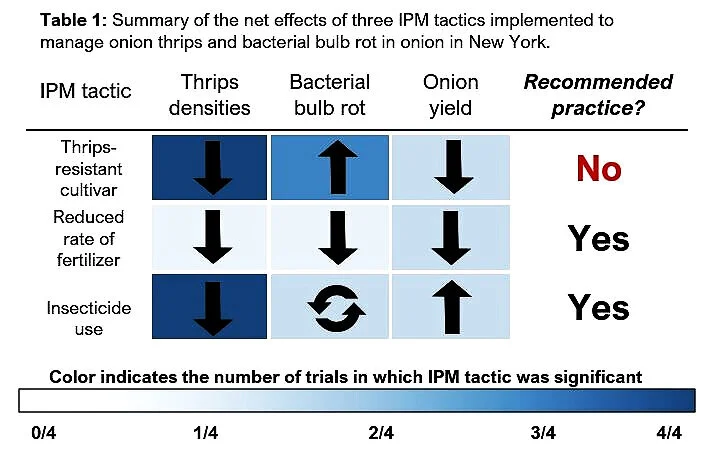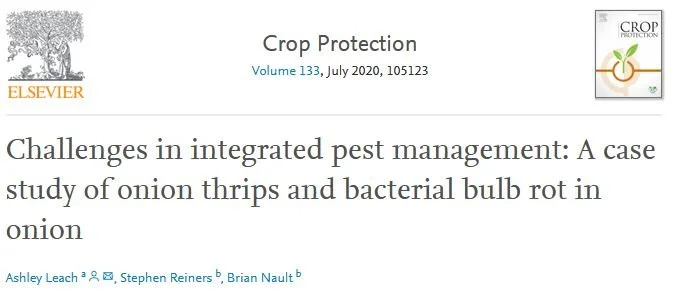Idealized integrated pest management incorporates multiple tactics (chemical and non-chemical) to control a suite of pests in agriculture. In other words, you should be getting the biggest bang for your buck possible! But sometimes, IPM doesn’t work out the way we expect. Like what’s shown below, where we had excellent thrips control with ‘Avalon’ but way more bacterial bulb rot.
Abstract
Most agricultural production systems face challenges with multiple arthropods, plant pathogens and/or weed species, but few studies address the impact of multiple pests when developing integrated pest management programs. In onion production, onion thrips and bacterial bulb rot are primary constraints, and choice of onion cultivar, fertility regime and insecticide use may be important tactics to manage both. In a two-year study in New York, two independent field trials were conducted concurrently. The first experiment included either a moderately thrips-resistant cultivar (‘Avalon’) or a thrips-susceptible cultivar (‘Bradley’), multiple nitrogen rates (0, 67, 84, 118, and 151 kg/ha) and either a season-long, action threshold-based insecticide program or no insecticide program (20 treatments total). The second experiment included the same cultivars and insecticide programs but evaluated phosphorous rates (0, 56, 112, and 168 kg/ha) (16 treatments total). In both trials and years, ‘Avalon’ experienced lower thrips densities, but suffered 58% more bacterial rot, which reduced onion yields overall by 9%. Nitrogen and phosphorus fertilizer had limited impact on onion thrips, bacterial rot, and onion yield. Although, higher rates of nitrogen fertilizer increased bacterial bulb rot in 2017. In both years, low rates of fertilizer (67 kg/ha N or 56 kg/ha P) produced statistically similar yields to plants supplemented with the highest rates of fertilizer. Insecticide use reduced thrips densities and increased bulb yield in both years but did not consistently reduce bacterial bulb rot. Therefore, growers can optimize onion production by reducing rates of fertilizer and using an action-threshold based insecticide program. Furthermore, our results indicate that IPM programs should be evaluated to consider multiple biotic constraints simultaneously within an agricultural production system as IPM tactics can be counterproductive.

